Suppose you are going on a last-minute overnight backpacking trip and have no backpacking food in storage. In that case, you’d be surprised to know how many choices you have at your local grocery store besides the Knorr dry pasta and rice meals, ramen noodles, and meal bars.
Everyday Grocery Items Suitable for Backpacking
While these items are not marketed as backpacking foods, they serve well on the trail or for traveling. For a hot meal, the general rule is to look for instant items with a cooking time of 10 minutes or less. Non-instant food that requires prolonged simmering will quickly deplete your stove fuel. Choose your food with this in mind to make the most of your fuel.
Instant Rice: Instant rice is fully cooked, whereas parboiled rice is partially cooked. You will find this on the ingredient panel of the mix, and the distinction makes a big difference in fuel consumption. Parboiled rice requires a long simmer to soften, wasting precious stove fuel. Instant rice needs no simmering and fully reconstitutes while soaking in hot water. We recommend instant dry rice versus the wet-packed ready-to-eat, microwavable pouches for backpacking to save you the most weight. The plastic pouches contain wet-packed fresh rice meant for heating in a microwave.
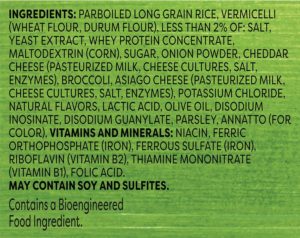
Consider Instant Brown Rice over white rice if you want the most nutrients and fiber, which will provide a gradual supply of calories. Pair rice with instant beans and taco seasoning for a fast meal, or roll it in a tortilla for a filling trail burrito.
- No Stove Instant Rice: Soak instant rice in cold water, keep covered, and place in direct sunlight for about 20 minutes.
Pasta: Refers to pasta originating from North America and Europe, typically made from hard durum wheat. Pasta made from semolina wheat will soften much faster than durum wheat. Like rice, instant or pre-cooked pasta is best for backpacking. If you can’t find those, regular pasta with a thinner wall and smaller cuts will cook the fastest. For spaghetti, look for angel hair and break the pieces into thirds. Fideo pasta in the Mexican food section works fantastic since it’s pre-cut into 1-inch pieces of angel hair spaghetti. See also Instant Organic Pasta.
You can find pasta made from buckwheat, chickpeas, quinoa, corn, lentils, rice, and sweet potato. Of all the types of gluten-free pasta, brown rice pasta takes the longest to cook. If pasta is marketed as gluten-free, it will command a premium price in grocery stores. Asian vermicelli or cellophane noodles are naturally gluten-free and will save you money.
|
|
Noodles: Refers to pasta typically originating from Asian countries, made with soft grain wheat for faster cooking. Other noodle varieties, such as rice noodles and starch noodles, contain no wheat. Almost all Asian noodles are ideal for backpacking because they are fast cooking. You can cook noodles on the trail by boiling water and soaking covered for about 5 minutes. Look for noodles in the Asian section of your supermarket, or go to an Asian Grocery store.
- Somen noodles are thin Japanese noodles made from wheat and are quick-cooking and lightweight.
- Buckwheat noodles are often a blend of wheat and buckwheat, and the thin style cooks fast.
- Vermicelli noodles are made from rice and are nearly instant.
- Ramen noodles are instant because they are cooked and fried before drying; however, extensive processing depletes the nutrients. Ramen also contains a lot of added sodium.
- Starch noodles or Cello noodles are dried noodles made from pure starch, translucent to glossy color, usually from mung bean, rice, and sweet potato. These are ideal for backpacking because they are lightweight, nearly instant, and offer a different texture.
- American-style noodles often contain eggs and are not recommended for the trail because they require a long cooking time.
- No Stove Instant Pasta: Soak in cold water, keep covered, and place in direct sunlight for about 20 minutes. Non-instant pasta/noodles will never fully absorb the water and soften unless the temperature reaches 160 to 180 degrees F or gelation temperature.
Couscous: This is a type of pasta made from crushed durum wheat. Most boxed couscous in the U.S. is the North African variety, which looks like yellow cornmeal and has been pre-steamed and dried to allow quick cooking. The couscous will fully reconstitute in 5 minutes when covered with boiled water. You will often find it in the Middle Eastern section or bulk bins at grocery stores.
- No Stove Couscous: Allow it to soak in cold water with a cover and place it in direct sunlight for about 20 minutes
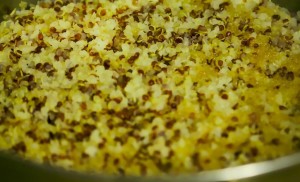
Quinoa: a nutritional powerhouse and a favorite staple for vegetarians and those avoiding gluten. Look for fully cooked (instant) quinoa for the trail. Quinoa seeds come in different colors. White quinoa has the mildest flavor, while red and black seeds contain slightly more calories and nutrients. Tri-color quinoa combines the benefits of all three. Flaked white quinoa is instant and resembles instant oats in texture. Like oats, flaked quinoa makes a quick hot cereal. Puffed or crisped quinoa is airy and crispy and is ready to eat. It is an excellent “no-cook” alternative to couscous in salads or cereals. Look for ready-to-eat or puffed quinoa in the grocery store cereal aisle.
Corn Grits: Grits are made with corn, a popular breakfast porridge in the American South. For faster cooking on the trail, look for instant or quick grits, cornmeal, or masa. Unfortunately, most instant corn is GMO/genetically engineered (in the U.S., the corn is GMO if the package does not specify). If food purity is important to you, look for organic cornmeal, which is easier to find than organic grits and masa. Cornmeal is ground finer than grits and will also cook faster, resembling more of a doughy texture. Masa is a Mexican-style cornmeal that has been nixtamalized (typically with lime water) to allow niacin (vitamin B3) to be absorbed. Grits complement nicely with sweet and savory toppings. For breakfast, try adding cinnamon, sugar, and nuts. Make a delicious polenta meal by adding dried cheese, Italian spices, garlic, and sun-dried tomato. Crank up the calories with olive oil.
Potato Flakes: Potato adds flavor and makes an excellent thickener for soups. Look for organic instant flaked potatoes. The conventional or standard potato has more pesticides by weight than any other food, which becomes concentrated during processing to make instant potato flakes. Avoid seasoned potato flakes containing artificial flavors, coloring agents, and other genetically engineered (GE/GMO) ingredients that can interfere with digestion and health. You are better off purchasing plain flakes and adding your own seasonings, such as garlic, salt, rosemary, and nutritional yeast/dried cheese.
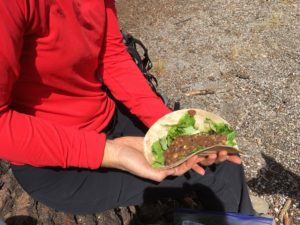
Tortillas. A dense carbohydrate that is versatile and keeps well in your pack. You can add almost any food inside and fold it into a wrap. We use tortillas as a wrap for our tofu scramble breakfast, bread to spread nut butter, and hummus mix, and a soft taco for burrito stuffing.
Rolled Oats: All varieties of rolled oats are pre-steamed and dried during the rolling process. The only difference is the thickness of the flake. Instant, regular, and thick can all be reconstituted in hot water. You can eat oats raw as cold cereal (muesli) or heat it for oatmeal. You can also add oatmeal to thicken and supplement calories in lighter meals such as soups. We do not recommend purchasing “instant” oats because they often contain unhealthy additives.
Dried Vegetables and Herbs: If you like flavor and texture in your food, pick up dried seasoning packets from the spice aisle. Spices add flavor and aroma, plus many contain healing properties. Seasoning goes a long way to transform a dried meal.
Soup Mixes (Dried): These are generally easy to find in stores, but make sure they are pre-cooked/instant. You don’t want the dry bean soup mixes meant for a slow cooker. Soup mixes can also be used as a sauce for noodles, rice, and potatoes.
Nuts and Seeds: Warehouse clubs and grocery store bulk bins have the best prices. Add handfuls of various nuts and seeds to add calories, texture, and flavor in cereals, rice, and pasta dishes. We like finely chopped walnuts in pasta dishes and roasted peanuts in rice meals. Slivered almonds, chopped pecans, sunflower seeds, chia seeds, flax seed, and hemp seeds are wonderful in cereals. Also consider powdered peanut butter (not the diet or fat-free version) for making ramen noodle sauces creamier. Nut butter packets or instant hummus spread on tortilla or crackers for a trailside snack/lunch.
Powdered Drink Mixes: Besides keeping you hydrated, hot and cold beverage mixes help keep things interesting and add calories. Some choices include citrus mix, smoothie mixes, herbal tea, soy milk powder, hot chocolate, apple cider, horchata, and mocha coffee.
Fresh foods: While most fresh foods don’t keep in your pack for more than two days, a few will last much longer. Uncut apples, celery, carrots, and avocados will stay fresh in your backpack for a week or between resupply. You can also grow sprouts on your backpack for multi-day trips.

Snacks: Energy/Granola bars are the apparent snack choice because they are easy to find and eat. Some can seem healthy, but they should not consist of your entire trail diet. Many are high in added sugar, have processed protein additives (soy isolate/soy lecithin), and fillers that can contribute to digestive distress and heartburn. Nothing can compare nutritionally to eating real whole food. Purchase dates, nuts, and other dried fruits to make your own trail bars made from real foods. Other snacks include dark chocolate, fruit leather, freeze-dried mixed vegetables, mixed nuts, and granola.
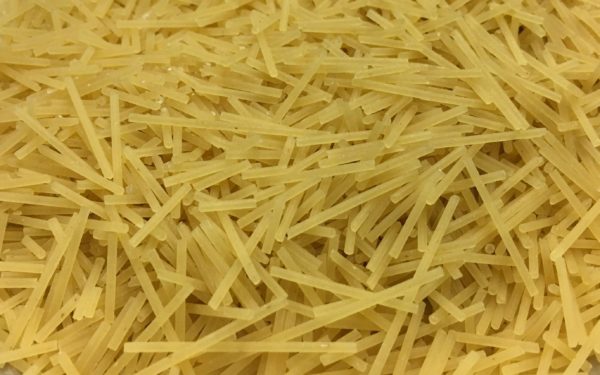
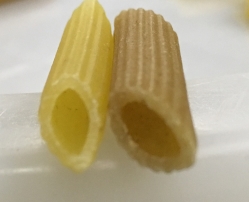
5 thoughts on “Not Marketed as “Backpacking” Food: Everyday Grocery Items for the Trail”
Read labels.Avoid processed food.This article was informative and well written.
this is so helpful and comprehensive. thank you!
I’ve done many multi day backpacking trips and still debate over food with every trip. While I’m leaning towards freeze dried meals because I don’t want to think about it, I do find that bags of 1/2 cup rolled oats, 1/4 cup nuts of choice, and 1/4 cup dried fruit of choice, plus cinnamon and optional honey/real maple syrup if I can get it in packets, are still an easy standard breakfast. Cooking is optional. The ziplock freezer bags work well for cooking them a bit. Some powdered milk might be okay too.
I am not in the states right now otherwise I would buy your products just to support this blog. Y’all are amazing.
when I went camping in sixth grade last year we had most of that food not all of it.